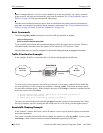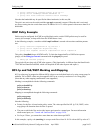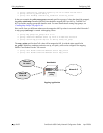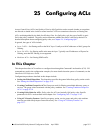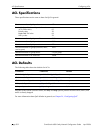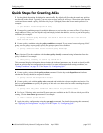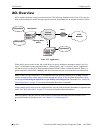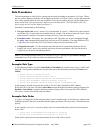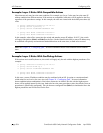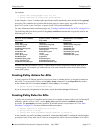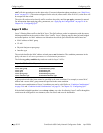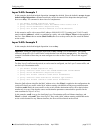
ACL Overview Configuring ACLs
page 25-6 OmniSwitch 6600 Family Network Configuration Guide April 2006
Example: Layer 3 Rules With Compatible Actions
More than one rule may have the same condition. For example, two Layer 3 rules may have the same IP
address condition but different actions. If the actions are compatible, both rules will be applied to the flow,
regardless of the precedence settings. In this example, the rules are created with the default precedence (0)
value.
-> policy condition X source ip 10.10.2.3
-> policy action Y priority 7
-> policy action Z maximum bandwidth 10m
-> policy rule Rule1 condition X action Y
-> policy rule Rule2 condition X action Z
In this example, when a flow comes into the switch and matches source IP address 10.10.2.3, the switch
will apply both policies (Rule1 and Rule2) to the flow. On the OmniSwitch 6600, a source IP address may
be combined with priority and maximum bandwidth actions at the same time, so both rules are used.
Note. See Chapter 24, “Configuring QoS,” for more information about valid condition/action combina-
tions.
Example: Layer 3 Rules With Conflicting Actions
If the actions are in conflict, however, the switch will apply only the rule with the highest precedence. For
example:
-> policy condition X source ip 10.10.2.3
-> policy action W 802.1p 5
-> policy action Z maximum bandwidth 10m
-> policy rule Rule1 condition X action W
-> policy rule Rule2 condition X action Z
In this case, a source IP address condition may be combined with an 802.1p action or a maximum band-
width action but not both at the same time (see Chapter 24, “Configuring QoS,” for more information
about condition/action combinations). Since these actions are in conflict, the rule with the highest prece-
dence will be applied instead. In this case, both rules have the same precedence value (the default, since no
precedence is specifically configured). The rule that was configured first (Rule1) is considered to have the
highest precedence and will be used for the flow.



